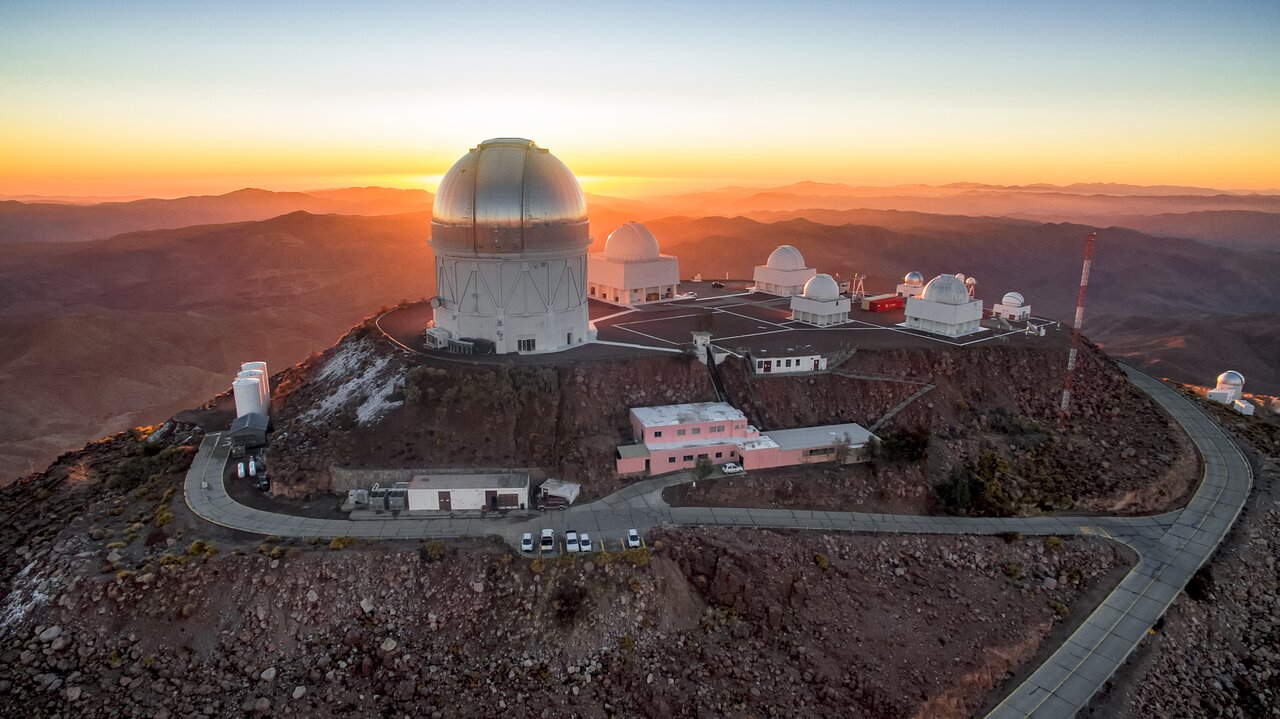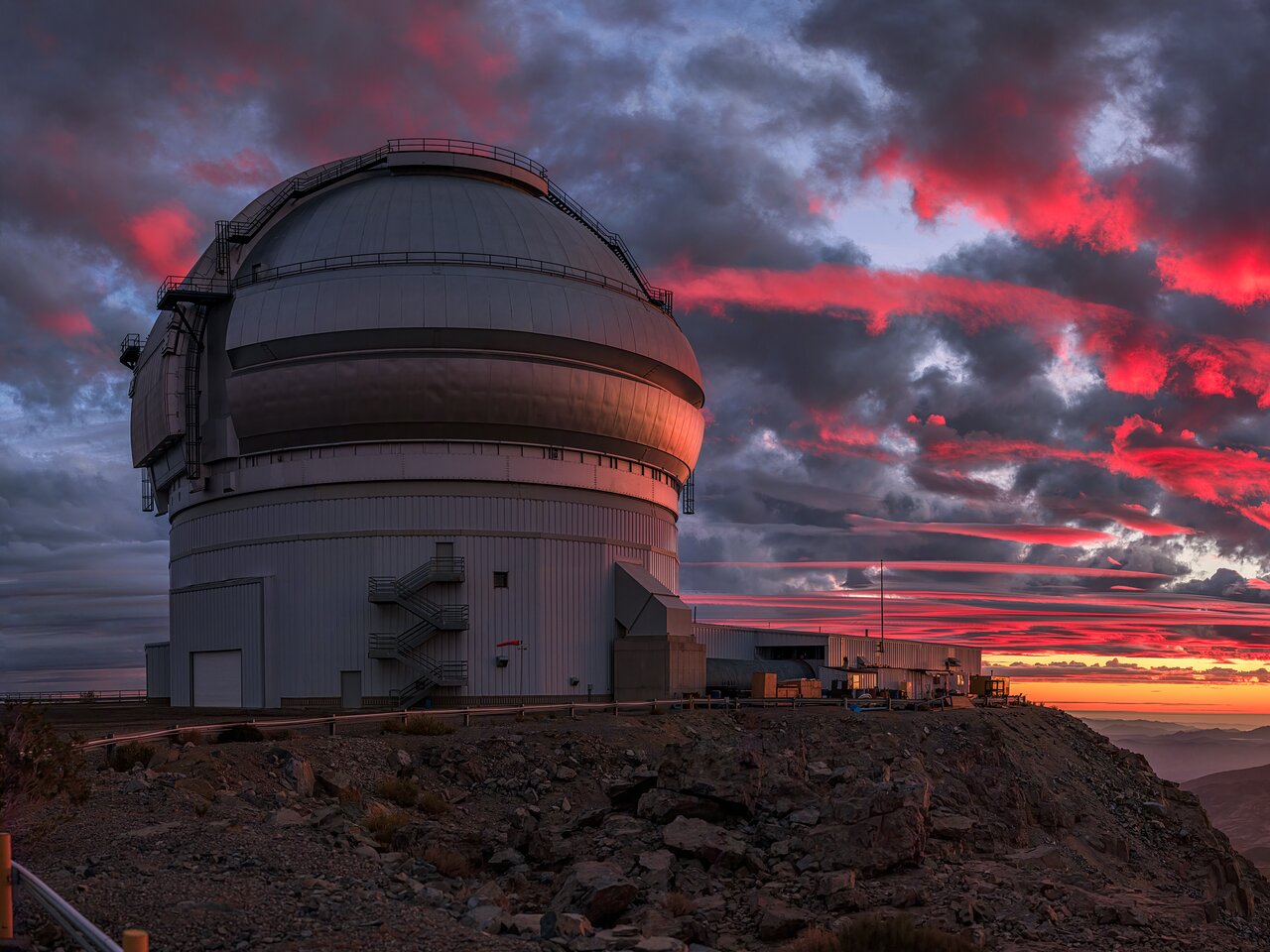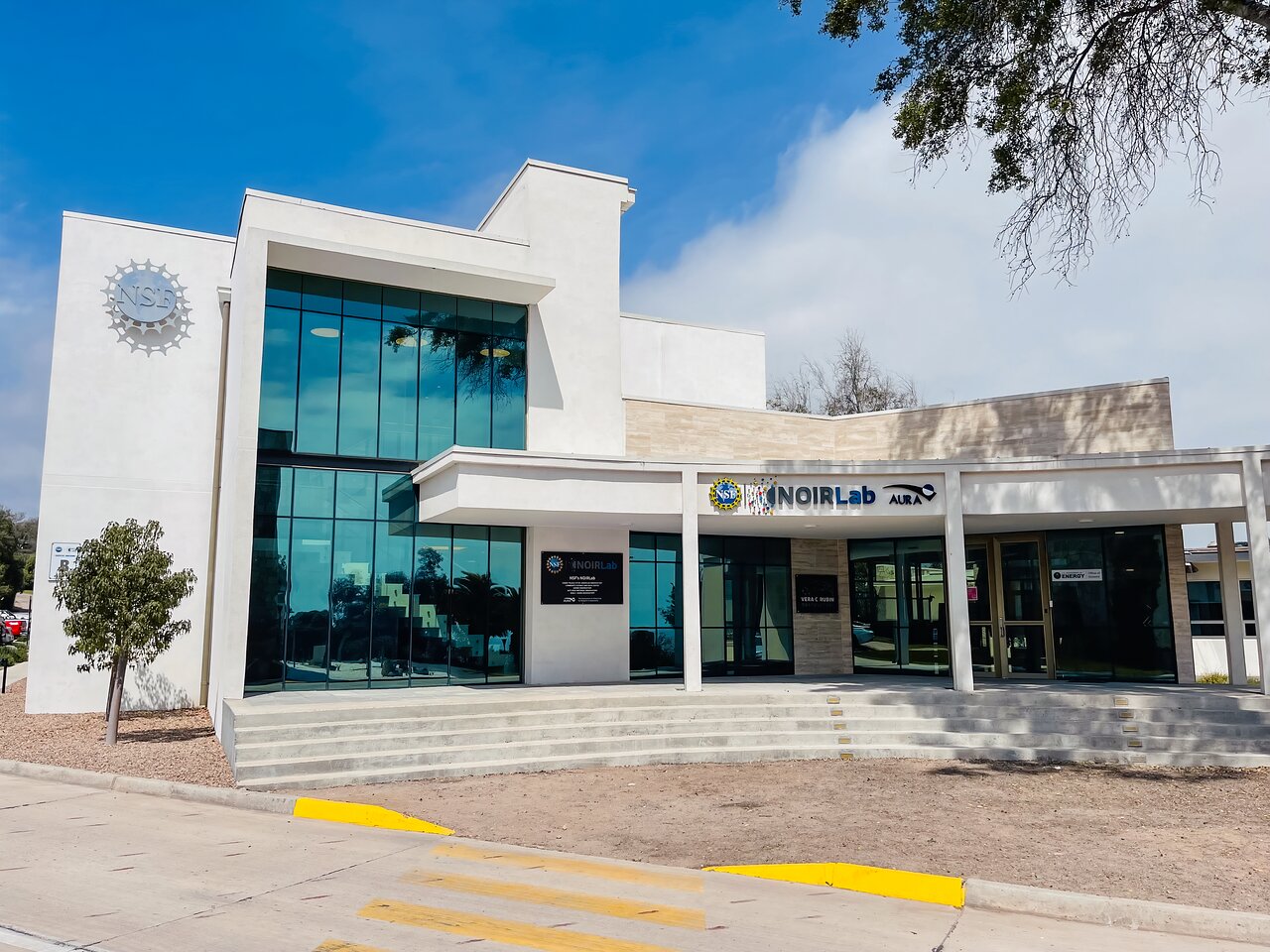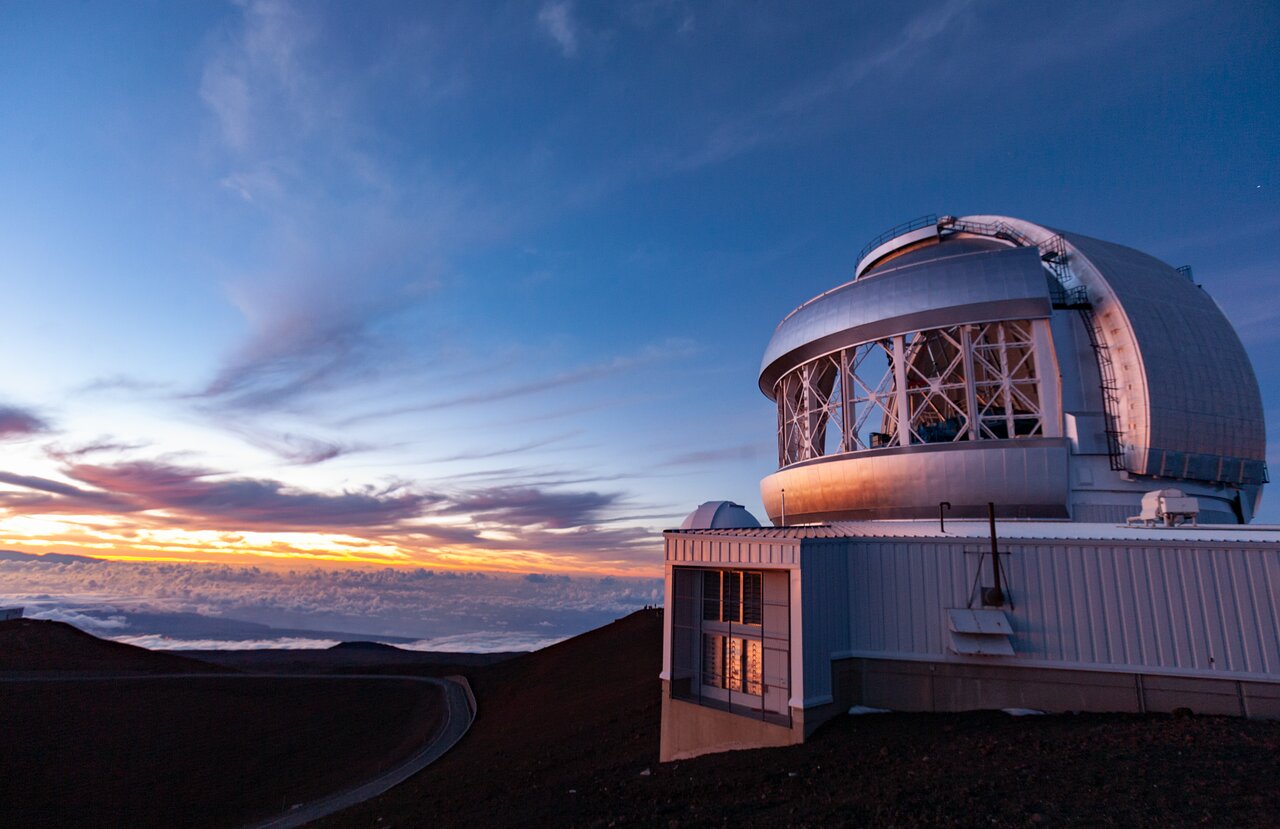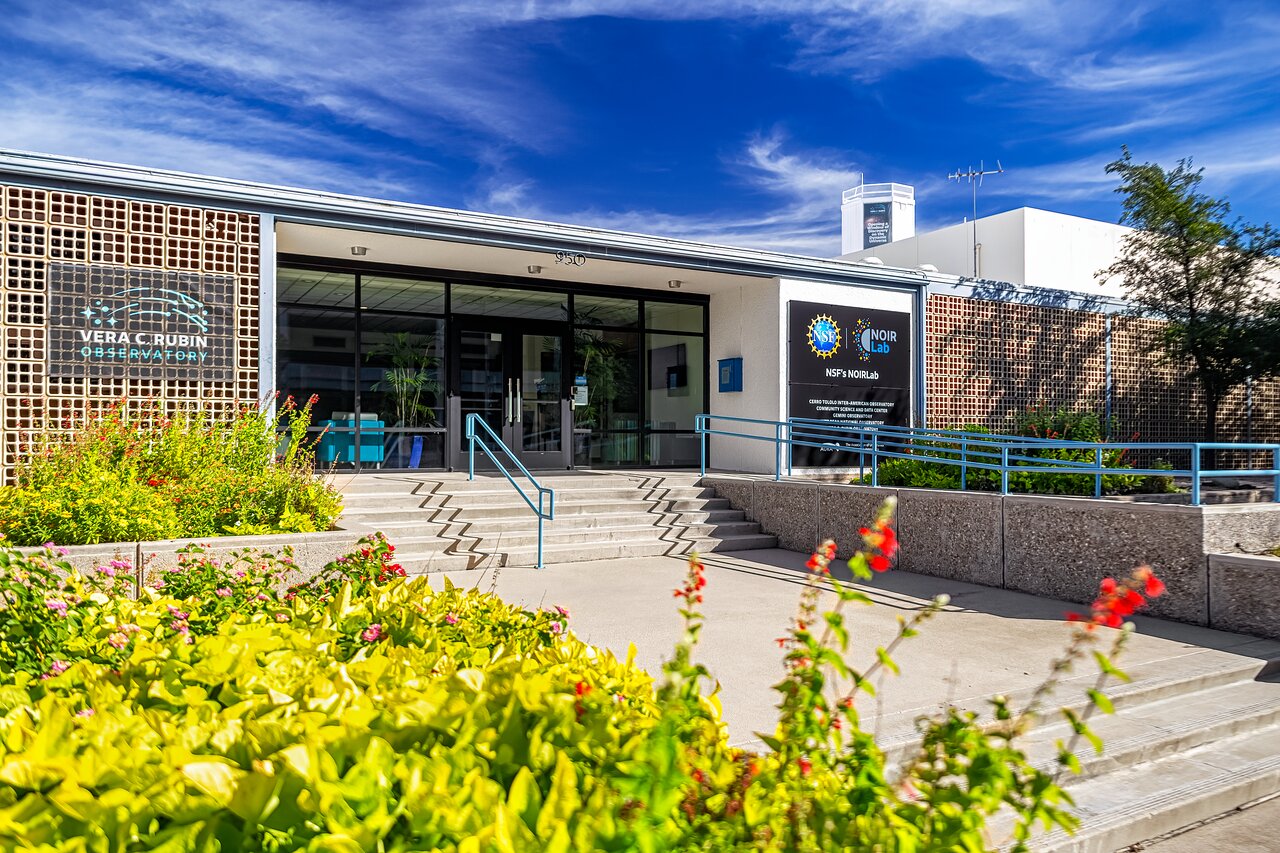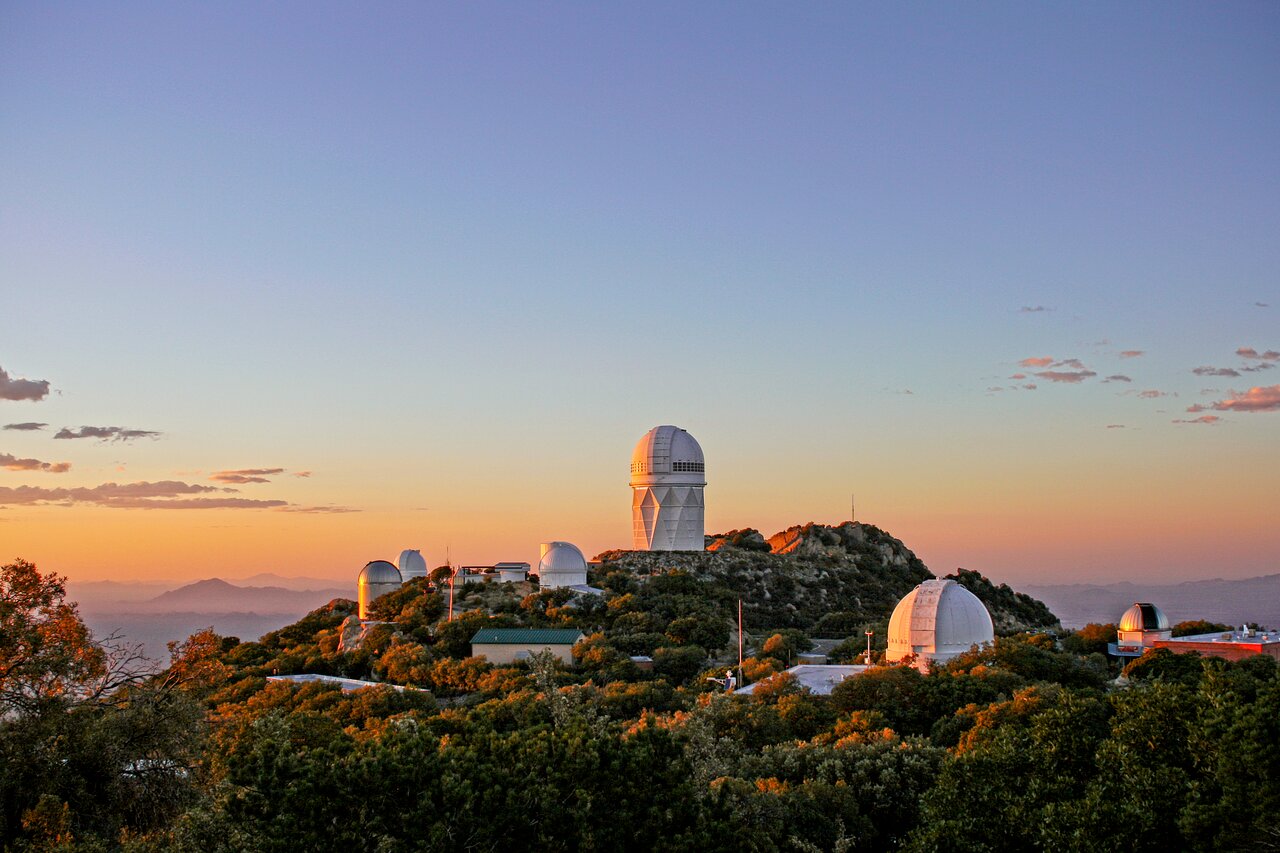
Guided Tours of NOIRLab’s Telescopes to Return in July
Public visits to some of NOIRLab’s world-class observatories are now gradually restarting following a hiatus during the pandemic, a wildfire, and the Gemini North mirror incident.
23 June 2023
From the moment Galileo pointed a telescope at the sky, these instruments have been bringing the vast cosmos and its multitudes of stars and planets closer to us, and we have come a long way since then. Advancing technology has surprised us time and again, finding objects stranger and more exotic than we could have imagined lurking in deep space.
We now have instruments that can see through masses of dust by capturing wavelengths invisible to humans, and observatories are being built to map out the Universe more comprehensively than ever before. Indeed, the precision engineering of today’s facilities is often just as awe-inspiring as the Universe they reveal, and NOIRLab’s suite of world-class telescopes is no exception.
But these instruments are not only for scientists; their purpose is to expand humanity’s knowledge of the Universe we live in and our place within it, for the benefit of all. While astronomers may be the ones who operate telescopes and make observations, they would not be able to pursue this mission without the support of the public.
That’s why NOIRLab has a team dedicated to organizing free visits to its sites, giving everyone the chance to see first-hand some of the telescopes that are at the forefront of current research. After being put on hold during the COVID-19 pandemic, these visits are set to start up again this month. What’s more, the team has been hard at work redesigning the guided tours to make sure you can get the most out of the experience.
Leonor Opazo, who leads the team coordinating the visits, has been working in this area for several years, and is looking forward to welcoming visitors back. “In my experience, people really enjoy getting to see the telescopes there on the site where astronomers actually do science,” she said, “We try to provide astronomy insights during the tours. We explain how astronomers make observations, what the different instruments are used for, and the science that we’re doing. It’s something that intrigues and amazes a lot of people.”
So, which of NOIRLab’s sites will you visit?
Chile
NOIRLab operates several telescopes in Chile, enabling astronomers to observe from the southern hemisphere. The observatories are located high on the mountains Cerro Tololo and Cerro Pachón, which — owing to the dry atmosphere and minimal cloud cover — offer exceptionally clear views of the night sky. For those interested in these locations, buses transport visitors to and from Control Puerta (Observatory Access Gate) and the mountains starting 1 July 2023.
Cerro Tololo Inter-American Observatory (CTIO) — guided tours on Saturdays, to restart on Saturday 1 July 2023
Located at an altitude of 2200 meters (7200 feet) on the mountain of Cerro Tololo, CTIO comprises multiple different telescopes, each with its own specialities. These include the Víctor M. Blanco 4-meter Telescope, an optical telescope with a mirror four meters in diameter, which saw first light in 1976. Today, it is used together with the Department of Energy-built Dark Energy Camera which among many things is investigating the expansion of the Universe, and may give us clues about the mysterious dark energy that is thought to pervade the cosmos.
CTIO also hosts many tenant observatories, offering astronomers around the world an exquisite view of the southern skies.
A highlight of the guided tours at this site is that visitors can walk around the internal platform inside the 1.5-meter telescope where they can watch the dome opening and the telescope moving. This telescope saw first light in 1968, and is now operated by the Small and Moderate Aperture Research Telescope System (SMARTS) consortium.
Cerro Pachón — guided tours on Fridays, to restart on Friday 7 July 2023
About 10 kilometers (6 miles) away from Cerro Tololo is Cerro Pachón, another mountain offering excellent viewing conditions for observatories. At an altitude of 2737 meters (8980 feet) high up this mountain is the Gemini South telescope. This is one half of the International Gemini Observatory, which comprises two identical 8.1-meter telescopes, one in each of Earth’s two hemispheres. Together, they offer a consistent view across the whole sky, and are contributing to research in almost all areas of astronomy.
On Cerro Pachón you can also find the Southern Astrophysical Research (SOAR) Telescope, which is operated by CTIO. Observing in both optical and a range of infrared wavelengths, SOAR can capture not only images, but also spectra of celestial objects — allowing astronomers to study particular features in the light emitted by them, and thereby deduce their chemical composition.
If you visit Cerro Pachón, you might also see some exciting work in progress of the Vera C. Rubin Observatory, which is currently under construction. This new facility is set to achieve first light in 2024 and will be able to conduct deep surveys, helping to map the Milky Way, identify transient astronomical events, and study dark matter and dark energy.
The tours to the Chile telescope sites will involve a free transfer by bus from the Observatory Access Gate to the telescope sites for all visitors with a confirmed reservation. More details can be found on our public visits web page.
AURA Recinto, La Serena, restarted on Wednesday 7 June 2023
There is also a base facility in Chile, called AURA Recinto — “recinto” meaning “compound” in Spanish. This is located in La Serena next to the campus of the University of La Serena, and houses the observatory headquarters, shops, and accommodation for visiting observers.
We welcome the public to this facility too, with visits including talks about astronomy and the work that the observatory staff do here. These visits are particularly suitable for school groups.
Hawai‘i
Gemini North Telescope — guided tours on Thursdays, to restart on Thursday 6 July 2023
The other half of the International Gemini Observatory, the Gemini North telescope, is situated on Maunakea in Hawai‘i. The site offers some of the most pristine views of the night sky, making it a popular spot for astronomers. In addition, Gemini North sits among a collection of other telescopes run by various international organizations.
Gemini Observatory is a world leader in adaptive optics, a technique that is used to correct errors in observations caused by Earth’s atmosphere. To do this, the telescopes direct laser beams at the sky and analyze the light that is reflected back, to understand how the atmosphere is distorting it. The guided tours take place during the day, but if you look towards the mountain at night, you might be able to see the impressive laser piercing the sky from a distance.
We have just reopened the public visits to the Gemini North Telescope on Maunakea. Book your free tickets here.
Gemini North Base Facility, Hilo — guided tours on the first Friday of the month, restarted on Friday 2 June 2023
The Gemini North Base Facility is located in Hilo, Hawai‘i, where the Gemini North telescope is often operated fully remotely from. The capacity for fully remote operation makes the Gemini telescopes unique among the class of 8–10-meter telescopes. We have just reopened the public visits to Gemini North Base Facility. Book your free tickets here.
Tucson, Arizona
NOIRLab Headquarters Tucson — guided tours restarted on Friday 2 June 2023
The Headquarters of NSF’s NOIRLab are located on Cherry Avenue in Tucson, Arizona near the University of Arizona campus. Directly across the street from HQ is the University of Arizona’s Steward Observatory.
The guided tours will take you through the office landscape of this building: NOIRLab’s lobby where visitors check in with the receptionist at the beginning of their visit; the courtyard, an outdoor area where NOIRLab staff can read, eat lunch, or have small, informal meetings; the NOIRLab HQ Library with a variety of reference materials, like a physical collection of books and journals related to astronomy, technology, and related fields; and the machine shop, in place since 1960, with metal lathes, milling machines, drill presses, and grinding machines, some controlled by computer numerical control (CNC).
Kitt Peak National Observatory (KPNO) and visitor center — only open for the Overnight Telescope Observing Program
KPNO is located at an altitude of 2096 meters (6877 feet) on the mountain Iolkam Du’ag (Kitt Peak) in the Schuk Toak District on the Tohono O’odham Nation. It operates several telescopes, including the Nicholas U. Mayall 4-meter telescope — which is well known for discovering methane ice on Pluto — and the WIYN 3.5-meter telescope, whose NEID instrument is a state-of-the-art exoplanet hunter. KPNO also hosts more than a dozen telescopes operated by various international consortia.
Near KPNO is the outstanding Visitor Center that has been inspiring guests since it was established in 1964.
Unfortunately, the reopening of KPNO and the Visitor Center to the public is delayed, following the impact of the Contreras Fire that broke out in mid-2022. The Arizona Department of Transportation is still working on the public road up to the observatory and will only open when new guardrails are mounted, and other repairs are done.
While the road to Kitt Peak is still closed, we are gradually reopening the exclusive Overnight Telescope Observing Program. This custom program gives you the full observatory experience and allows up to four guests as visiting astronomers at Kitt Peak.
To book one of the tours, please visit the newly launched visits website, where you can find information about the activities and the online reservation system. The website also has links to various resources, including maps of the sites and information about the different telescopes and their instruments, in case you choose to read up on them before you visit. You’ll also find a link to virtual tours of the observatories, so that you can explore them from anywhere in the world.
--
You can follow updates on our social media channels to be the first to hear when more activities reopen, or subscribe to our Eventbrite account to be notified when we publish new events.
Kitt Peak National Observatory: Facebook, Twitter
Cerro Tololo Inter-American Observatory: Facebook, Twitter
International Gemini Observatory: Facebook, Twitter, Instagram
NOIRLab: Facebook, Twitter, Instagram
NOIRLab in Spanish: Facebook, Twitter, Instagram
NOIRLab looks forward to welcoming you back into the world of astronomy!
Links


